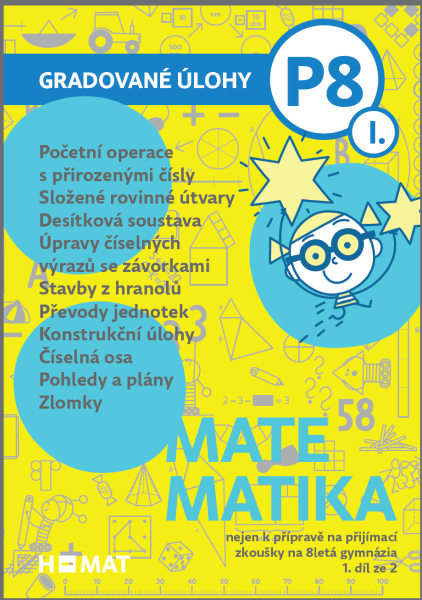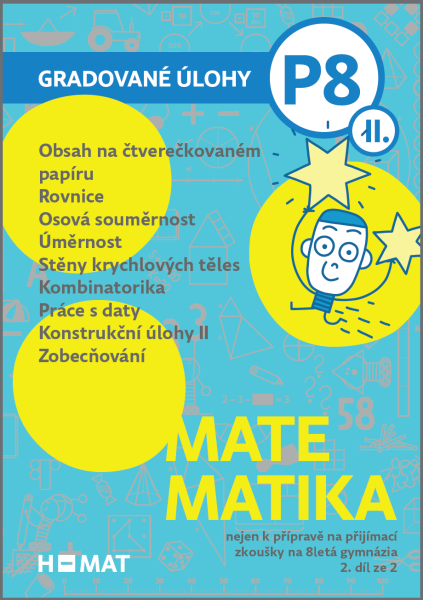Error is a natural phenomenon that accompanies any human activity, especially when we try the activity for the first time. When error is handled well, it is a welcome companion on the road to understanding. When we recognize it, and identify its causes, our ability to conduct the given activity better in the future increases.

Throughout the Hejny learning process we do not condemn error, we defend and welcome it. We appreciate error as an aid to each pupil’s true understanding. We are aware that one learns from one’s mistakes, and want to implement this process fully in our teaching and learning (not only in mathematics).
In traditional teaching, error is usually understood as an unwanted phenomenon. Teachers themselves are afraid of making a mistake. They feel responsible for their pupils’ potential errors (whether committed on the board or in an exercise book) so they are quick to point them out and correct them.
The pupils’ parents, who also perceive error as unwanted, increase the teacher’s fear of potential mistakes. In consultations, teachers more often talk about the mistakes themselves, rather than about their causes, or ways of preventing them from happening.
A teacher who teaches by instruction expects their pupils to repeat processes or rules that have been demonstrated or stated in class. Anything that deviates from these processes is usually seen by the teacher as mistakes. This is detrimental to the development of the pupils’ independent thinking.
By treating error as an unwelcome phenomenon, teachers create an atmosphere in the class that blocks the children. Faced with the fear of committing an error, pupils prefer not to do anything. The teacher also does nothing to prevent error, other than exert pressure on the pupils. Some teachers even believe that punishment for errors encourages their pupils’ effort to learn and therefore improves their academic results.
However, reality does not confirm this assumption. It is true that pupils, out of fear, invest more energy in the subject matter, but most of this energy goes to waste because the pupils’ activity is then driven by, and focused on the need to protect themselves from punishment: pretending to be ill, cheating, lies, truancy or making excuses.
When a pupil makes a mistake, say, in calculation, the teacher does not usually immediately see where it stemmed from. If he or she simply corrects the mistake, this does not help the pupil much. The fundamental question, i.e. why they committed this error, remains a mystery for the pupil.
If a teacher does not try to understand the source of an error, the correction is understood only in terms of teacher-authority. The pupil does not see where the fault in his reasoning is and will, naturally, commit the same error next time.
Mistakes should not discourage pupils. An error can and should be a useful experience. The teacher’s role is to help pupils learn from errors. Teachers who reprimand pupils for making mistakes make the process of learning new things more difficult.
If a pupil is afraid of making a mistake, the Hejny method teacher encourages the pupil by giving his or her own example: showing them where the teacher went wrong, and how they discovered the source of their mistake. Whenever a pupil points out a mistake made by the teacher, the teacher thanks the pupil for correcting the error, and rewards them with praise. Analyzing the (teacher’s) error out loud in front the class is highly effective. The pupils can observe possible ways of dealing with error, and will find such examples inspiring.
Intellectually, understanding the reasons behind an error is an effective way to grasp the nature of a phenomenon under investigation. This is not only true for pupils in school but also for famous mathematicians. They, too, committed errors and the discovery of the errors served as an important lesson for them.
When teachers know how to work with pupils’ errors, they can exploit each mistake didactically. The teacher’s knowledge is both diagnostic and educational. Using their diagnostic skills, the teacher gauges their pupil’s error awareness (of whether and where the error occurred). Their educational skills comes into practice in order to repair the problem. When we find out that a pupil does not understand something, we enable them to fill in the gaps in their experience themselves.

 Doporučujeme: Dvoudílná série "Gradované úlohy nejen k přípravě na přijímací zkoušky na 8letá gymnázia." Publikace jsou vhodné i jako doplněk běžné výuky, když dítě není učené Hejného metodou. Tištěné verze koupíte na www.h-ucebnice.cz. Elektronickou verzi přes www.h-edu.cz.
Doporučujeme: Dvoudílná série "Gradované úlohy nejen k přípravě na přijímací zkoušky na 8letá gymnázia." Publikace jsou vhodné i jako doplněk běžné výuky, když dítě není učené Hejného metodou. Tištěné verze koupíte na www.h-ucebnice.cz. Elektronickou verzi přes www.h-edu.cz.